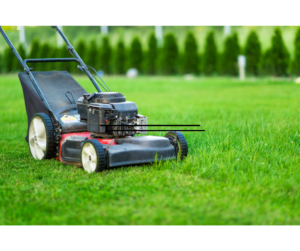How to Find the Best Blades for Your Grass Type
Choosing the right lawn mower blades for your grass type can significantly impact your lawn’s appearance and health. Different grass types require specific blade designs for optimal cutting and mulching.
To find the best blades for your grass type, identify your grass variety and mowing needs, and match them with appropriate blade designs like mulching, high-lift, or low-lift blades.
Here’s a quick and simple guide to finding the best blades for your grass.
How to Find the Best Blades for Your Grass Type | Step-by-Step Guide

Discover the perfect lawn mower blades tailored to your grass type and mowing needs with this comprehensive, easy-to-follow guide.
1. Identify Your Grass Type
- Warm-season grasses (e.g., Bermuda, St. Augustine): These thrive in hot climates and may require specialized blades for dense growth.
- Cool-season grasses (e.g., Kentucky Bluegrass, Fescue): These grow in cooler climates and are typically finer and softer.
2. Assess Your Lawn’s Needs
- Bagging: If you collect clippings, high-lift blades are ideal for creating enough airflow to lift clippings into the bag.
- Mulching: For returning clippings to the soil, mulching blades are designed to finely chop grass for better decomposition.
- Side Discharge: Standard blades are suitable for cutting and discharging clippings directly.
3. Match Blade Type to Grass and Mower
- High-Lift Blades:
- Best for dense or tall grass.
- Great for bagging clippings on warm-season grasses like Zoysia or Bermuda.
- Low-Lift Blades:
- Ideal for sandy or loose soil to reduce dust and debris.
- Suitable for soft, cool-season grasses like Ryegrass or Bluegrass.
- Mulching Blades:
- Perfect for lawns that benefit from natural fertilization.
- Work well with grasses that grow moderately, such as Fescue or Perennial Ryegrass.
- Gator Blades:
- A hybrid of high-lift and mulching blades, effective for both bagging and mulching.
4. Check Blade Compatibility
- Refer to your mower’s user manual to ensure blade compatibility.
- Verify the blade length, center hole size, and design to match your mower model.
5. Evaluate Blade Material
- Look for durable materials like hardened steel, especially for mowers used on rough or uneven terrains.
- Coated blades resist rust and maintain sharpness longer.
6. Consider Lawn Size and Terrain
- Large lawns: Opt for blades with wide cutting widths to reduce mowing time.
- Hilly or uneven terrain: Choose blades designed for stability and durability.
7. Experiment if Needed
- If unsure, start with a general-purpose blade and evaluate performance.
- Switch to specialized blades if necessary for better results.
Why Choosing the Right Blade Matters
- Healthier Lawn: Proper blades ensure clean cuts, preventing grass from fraying and becoming vulnerable to disease.
- Efficiency: The right blades reduce mowing time and fuel or battery consumption.
- Better Results: Tailored blades provide a smoother, more even lawn finish.
Pro Tips
- Replace blades annually or whenever they show signs of wear.
- Keep spare blades on hand for quick replacements during the mowing season.
- Sharpen and balance your blades regularly for optimal performance.
Conclusion
By following this guide on How to Find the Best Blades for Your Grass Type, you’ll ensure that your mower performs at its best, keeping your lawn lush, healthy, and beautiful. Choose wisely, and enjoy a perfectly manicured lawn!
Share this content:













